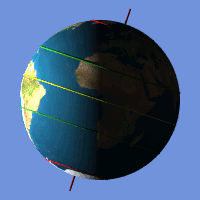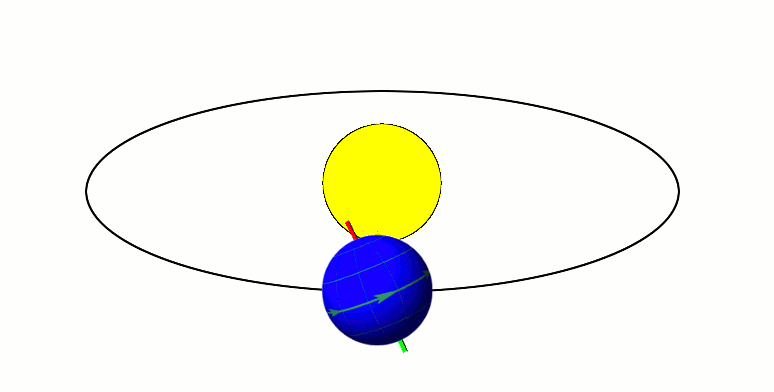In my last post, we talked about "plant-soil feedbacks". I showed you some of the plants that live at our field site. When they grow, they change the soil that is the habitat for the soil organisms. Who are those soil organisms?
When most people think about animals living in Antarctica, they think about penguins and seals. They spend some of their time on land, but they are not year-round residents and usually live only on the coast. The REAL land animals of Antarctica live in the soil. They live there all year, and spend all of their time on land. Some of them are only found in Antarctica, and nowhere else! But, when you look at a picture of the land in Antarctica, you don't see them. That's because they are microscopic!
 |
| See the bird sitting on top of the rocks? It is only a part-time resident in Antarctica. The year-round residents live in the soil. There are hundreds of them in this picture, but you can't see them because they are microscopic! |
So who are these microscopic organisms that we will be studying? Most of them are bacteria. They are unicellular (made up of just one cell, unlike animals who have loads of cells in one organism). We tend to think of all tiny bacteria like they are one type of organism, but in fact they are very diverse. Just one handful of soil can have thousands of species of bacteria living in it! The different species do different jobs in the soil. Some bacteria are good at recycling nitrogen, others help break down old plant material, some process phosphorus and sulfur... and so many other things! Plants (and humans) couldn't survive without bacteria doing all of their important jobs.
Bacteria, and other unicellular microorganisms like fungi, make up the base of the food web in soils. They are mostly eating old, dead plant material in the soil, and recycling the nutrients. There are also microscopic organisms that eat the bacteria, and predators that eat THOSE organisms. There is a tiny, microscopic food web that is much more diverse than you might think!
Many of these organisms that live all over the Antarctic continent are nematodes. Those are the "round worms" you might have learned about in your science classes. Nematodes are very cool, because they can live EVERYWHERE on the planet. Some species are only found in Antarctica, and nowhere else. They can survive in Antarctica because of their special ability to freeze-dry themselves for periods of time. That is called "anhydrobiosis", pronounced Ann-hydro-by-O-sis. They curl up into a little spiral and wait through the tough times (like winter in Antarctica), and can spring back to life once water is available again.
 |
| This nematode, Scottnema lindsayae, is native to Antarctica. |
Another common group that we find in parts of Antarctica are soil mites. They are bigger than the nematodes. Sometimes they are so big that you can see them without a microscope. Mites are a very common group of organisms found all over the world. You might have heard of mites before, because some of them are parasitic, meaning they live off of another organism. Ticks and chiggers are mites, for example. But soil mites are good for us! They don't harm other animals. They have an important role in soil food webs to help recycle dead plant material. Many of the mites we find in the soil in Antarctica eat fungi. Some soil mites are predators, and eat nematodes or other mites. This mite crawling around under my microscope is one that probably eats fungi:
There are also springtails living in Antarctica. You probably haven't heard of these before, but they are also very common around the world. We have a lot of them in soil in Arizona and all around the United States. They are primitive relatives of insects and also eat fungi. Here is a video of a large group that we found floating on a puddle in Antarctica.
(If your volume is on, you can hear birds in the background. They are skuas, and they will dive bomb your head to protect their nests. You can hear me yell at one that got a little too close to my head.)
The last group that I will introduce you to are midges. Midges are insects. They are the only insect that can live in Antarctica year-round! You have seen midges before, because they are the small little flies that tend to swarm together. The species that lives in Antarctica doesn't have wings, though. They can survive being frozen, but they cannot survive in the coldest places in Antarctica.
/https://tf-cmsv2-smithsonianmag-media.s3.amazonaws.com/filer/45/07/45073aeb-efb7-41f8-b566-090979f73e0d/5ab8ee4dccb1dimage.jpg) |
| You can read this cool article in the Smithsonian Mag about Antarctica's native midges. |
Now you've met the microorganisms we'll be studying. As they go about their lives in the soil, they help recycle dead plant material and nutrients, which makes the soil more fertile for plants. So even though you can't see them without a microscope, they are a very important part of the ecosystem!























/https://tf-cmsv2-smithsonianmag-media.s3.amazonaws.com/filer/45/07/45073aeb-efb7-41f8-b566-090979f73e0d/5ab8ee4dccb1dimage.jpg)




